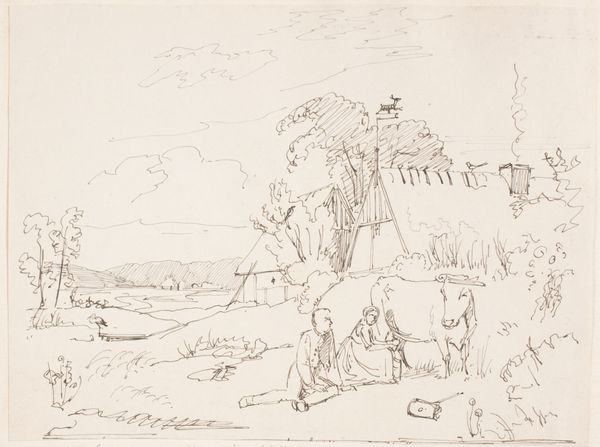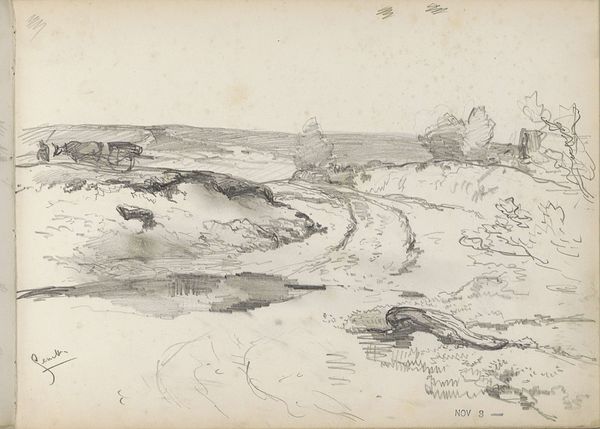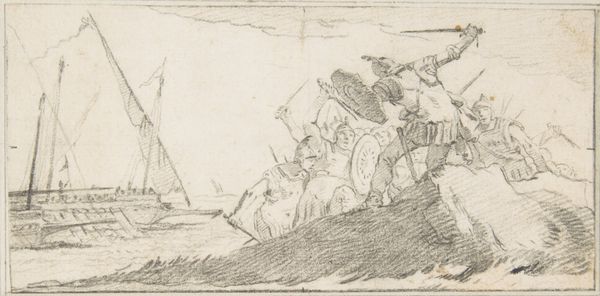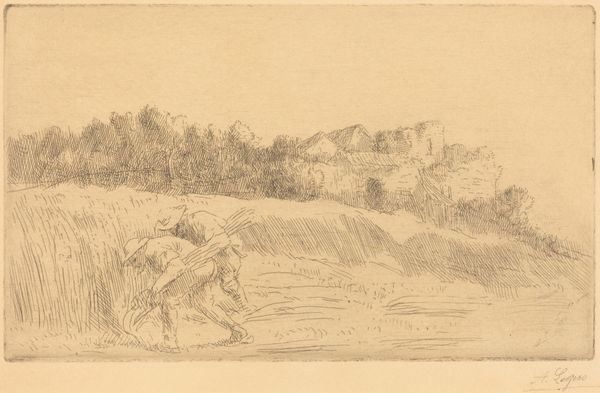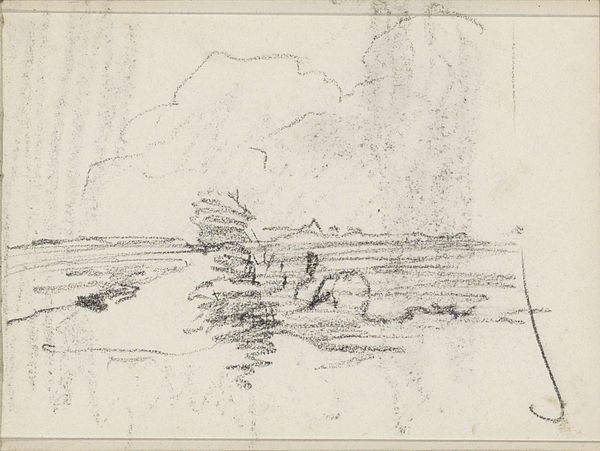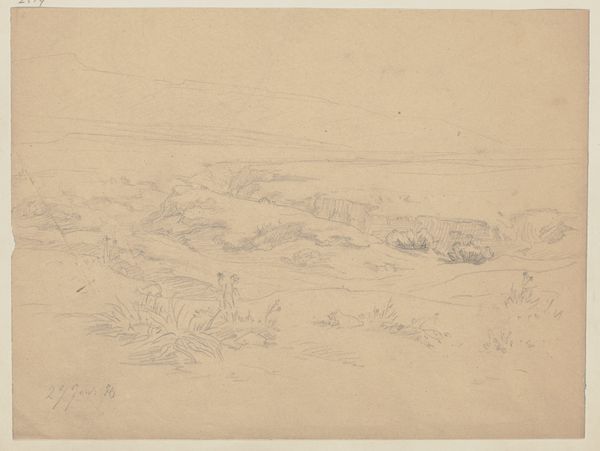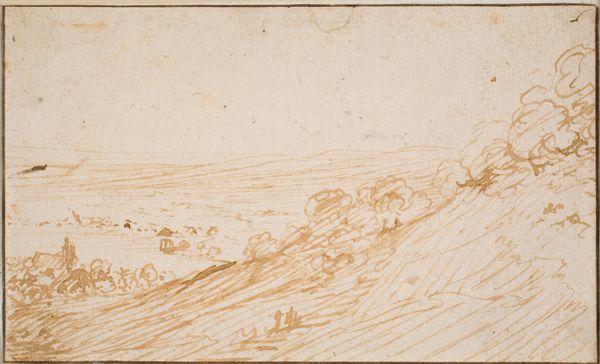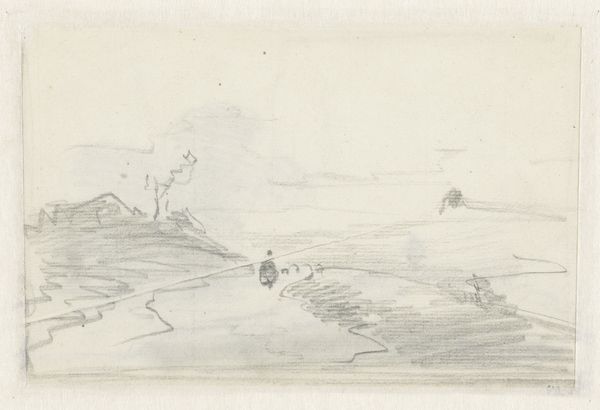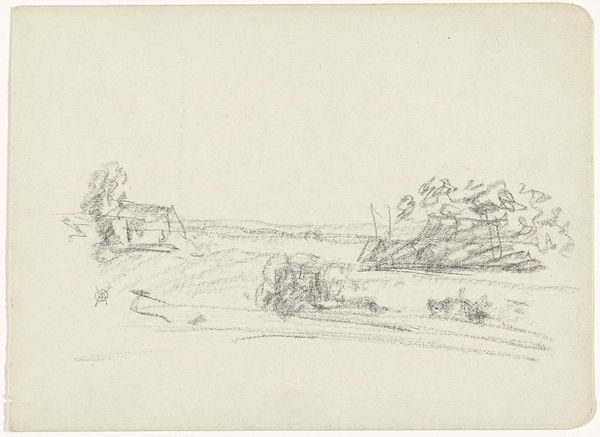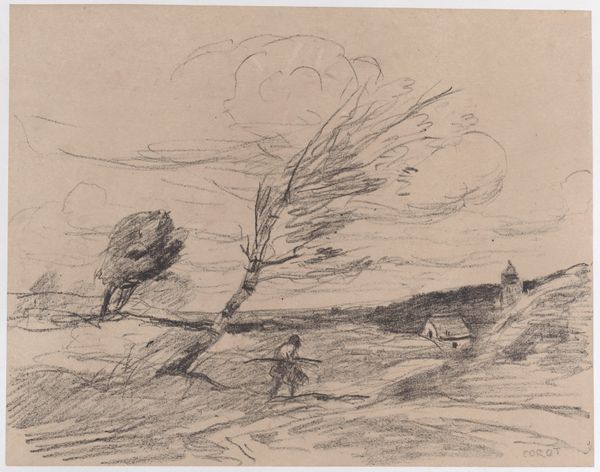
Udsigt over Elben fra Lilienstein mod Schandau 1789 - 1840
0:00
0:00
drawing, pencil, graphite
#
drawing
#
pencil sketch
#
landscape
#
romanticism
#
pencil
#
graphite
Dimensions: 203 mm (height) x 264 mm (width) (bladmaal)
Caspar David Friedrich rendered this vista of the Elbe River with pencil on paper. Friedrich was working at a time of great social upheaval in Germany. The Napoleonic Wars, and the subsequent reshaping of Europe, challenged old orders and fostered a yearning for national identity. His landscapes, like this one, often evoke feelings of solitude and contemplation. It is worth remembering that during this period the public role of art began to change; museums were becoming more common, and art was increasingly seen as a means of expressing national identity and cultural values. The scene is observed from atop the Lilienstein, looking towards Schandau in Saxony. It's a landscape imbued with a sense of the sublime, reflecting the Romantic movement's fascination with the power and grandeur of nature. Friedrich's choice of subject matter, a distinctly German landscape, speaks to the emerging national consciousness of the time. Understanding this sketch fully requires looking into the cultural and institutional history of 19th-century Germany. Researching the Romantic movement, the rise of nationalism, and the development of art institutions can give us a richer appreciation of the work. Ultimately, this sketch's meaning is contingent on its social and institutional context.
Comments
No comments
Be the first to comment and join the conversation on the ultimate creative platform.
